By Paul J. Hubley, P.Geo.
Part I – Introduction
I write this from the floors of ancient seas, drinking connate groundwater filtered through Ordovician limestones of the Iapetus Ocean mixed with proglacial Champlain Sea water. In all things and over vast expanses of time we are connected.
– Paul Hubley, inspired by a passage in Geo-Logic (Frodeman 2003).
Part II – Bilbo Baggins, Foucault, and Donald Rumsfeld
“It’s a dangerous business Frodo, going out your front door, you step onto the road and if you don’t keep your feet there’s no knowing where you might be swept off to” – Bilbo Baggins, The Hobbit. J.R.R.Tolkien. Bilbo Baggins was speaking from his hard-earned wisdom, entitling his book “There And Back Again, A Hobbit’s Tale”. On the surface it is an episodic tale involving the mysteries of earth and perhaps an early awareness of risk management. But really it’s about relationships.
From the title we can relate something of the adventure to our own lives – these days we fill time with our “to’ing” and “fro’ing”, physically and emotionally – going here, coming back, going there, and coming back, often with subtle changes, hopefully mainly positive changes. Stand in one place for long enough and you will observe the back and forth of your life and that of your environment. Losing wallets, finding wallets, losing pens, finding pencils, losing faith in one, restoring faith through another. Birds migrating south, birds migrating north, water heaping onto shore, water receding, daylight coming and going. Back and forth. Repeated. Someone unfortunate enough to experience a hurricane feels the strong winds from one direction followed by calm followed by strong winds from the other direction – back and forth, possibly without ever having the perspective of seeing its regional rotation. At particular scales, circularity may be invisible, linearity is unclear – life can appear as a pendulum.
But what appears to be a There and Back Again pendulum effect on a narrow perspective is typically “corrected” by geoscientists that have come to understand that processes occur on broad cycles, often repetitive, over many millennia and over vast areas. But here we’re going to ignore all of that and do the dangerous business of going out the front door for a moment, exploring the pendulum from another perspective.
“A pendulum is a tool that is used to connect to your higher self and ‘source’ by asking questions to help guide, clarify, and raise your awareness.”
reiki healer Kelsey Patel
After cleansing the pendulum and preparing questions relative to your life, Patel instructs us to (i) learn how the pendulum moves; (ii) start with what you know; and (iii) remain open (that’s a tough one for us..).
In the mid 19th century it was already widely established in science circles that the Earth was round and rotating, but definitive proof was lacking. Jean Bernard Léon Foucault’s pendulum (Foucault’s Pendulum) provided a simple and visual connection between theory and demonstration that was repeatable by anyone. Its key contribution was the insight it provided to a vast audience, especially those from other entry points to the idea: non-scientist, child, believer and skeptic alike. For the first time this was demonstrable proof of theory that could now be seen and felt and readily repeated – it provided needed perspective to the public. These are now found in learning institutions throughout the world.
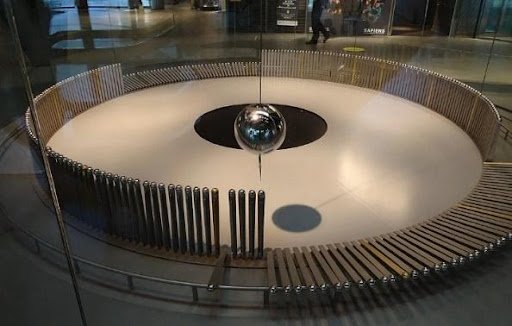
Foucault’s Pendulum exploits the differential between the faster velocity of rotation near the equator and the slower velocity closer to the poles. One of these pendulums activated far enough from the equator will reveal a slow but easily measurable rotation (about 270 degrees over a day of operation in Paris, for example). This doesn’t work at the equator, as there is no speed differential.
Reiki healer Patel asks us to go with what we know. One thing I know is that I don’t know reiki healing. But when I read the following nugget I always feel better about struggling with the vastness of the unknown:
Reports that say that something hasn’t happened are always interesting to me, because as we know, there are known knowns; there are things we know we know. We also know there are known unknowns; that is to say we know there are some things we do not know. But there are also unknown unknowns—the ones we don’t know we don’t know. And if one looks throughout the history of our country and other free countries, it is the latter category that tends to be the difficult ones.
Donald Rumsfeld
Geoscientists know a lot about technical things and are particularly good at knowing known knowns – either within geoscience or connecting to other technical sciency and engineery things. Also, we are slowly and collectively developing an awareness that we (most of us, me included) don’t know as much about the people sciences (humanities and philosophy, etc.) but that we should – a growing awareness of the known unknowns, if you will.
Geo-Logic (Frodeman, 2003) attempts to connect geoscience to philosophy, which is about as unknown unknown as some of us with sciency backgrounds can get. He postulates that “Geologic” seeing is poetic vision constrained by the sobriety of science, a series of daring imaginative leaps disciplined by examination and measurement.
I don’t know about daring but let’s move slightly in that direction for a short time.
Part III – Familial Geoscience
If you look up this term in an online dictionary you find all sorts of things, like familiar geology, family as it relates to geologic formations, etc., but no Familial Geology or Familial Geoscience. I did not see a definition so I propose one here. How about this: Familial Geology is the relationality of members of a familiar group with the landscape – how relationships are fostered, change and develop related to specific geological processes, geological events or areas of geological significance, etc. There are probably plenty of modern examples of families that episodically go rock collecting together, strengthening bonds between each other and the land, or that share a particular bent toward geology as an inter- or intra-generational career choice, or communities ancient to modern that define their lives around areas of particular geological significance, etc. Familial Geoscience is our connection to these relationships from a science perspective. Indeed, it is ‘where’ stories of human beings (the anthropos) and stories of planetary time (cene) are brought together that defines the Anthropocene, a term gaining much momentum today (the term Anthropocene was credited to Nobel Prize Laureate Paul Crutzen in 2000). So now that we have put it into context and defined it, we will look to the delta (change) in the future to see if our term erodes or if it accumulates.
In this the world premiere of Familial Geoscience, before any potential erosion, I attempt to make introductory connections between my family migrations to the east coast, superimposed on 3 swings of Foucault’s Pendulum into the geologic past – into recent, mid-range (proglacial) and deep time – then back to current time and home. The times were selected to match some of the key physical features of home in Ottawa where ancient sedimentary rock is overlain by Champlain Sea sediments; our seasonal migration path, to’ing and fro’ing along the TransCanada to the east coast; and family life past and present. It’s perhaps a bit of whimsy, but sometimes that’s hard to avoid.
Recent (400-500 years ago) and back again
The first and smallest reaching of the three swings is mainly social/cultural, as the fundamental geological processes affecting the migratory route haven’t changed appreciably in the past few hundred years (with the notable exception of humans’ various changes to the Earth in the Anthropocene). Following the Ottawa River to the St. Lawrence to the coast would cast us back to the earliest European explorers who by most accounts were late to the party by about 9,000 years. Our family’s arrival at the coast in the past somewhere between 400 and 500 years ago, my children (on their mother’s side) connect to their Mi’kmaw roots. These folks were deeply rooted to the land then and remain so today.
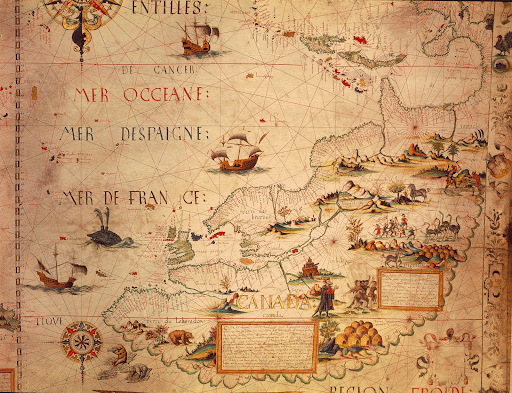
Early (European) cartographers around that time had an intriguing approach to deal with the physical and biological unknowns on Turtle Island (known to some of us as North America). This map from 1550 shows a couple of solitary unicorns, one to’ing and one fro’ing, apparently exemplifying the unknown unknowns of the exotic lands. Given the features, it looks to me more like a map of Tolkien’s Middle Earth than anything else – in this case the Shire would be in Maine or Vermont, and the orcs of Mordor would be a herd of ostriches. On further reflection perhaps this map has more relevance than I thought, especially to those of us that have had run-ins with ostriches. You’ll also notice that North is downward, which was common before the European cartographers decided that the North should be consistently on top of the global South in world maps (BBC).
These days a map like this might be acceptable, even desired, for Familial Geoscience once we remove its obvious racial biases … and provided we do not disturb the unicorns.
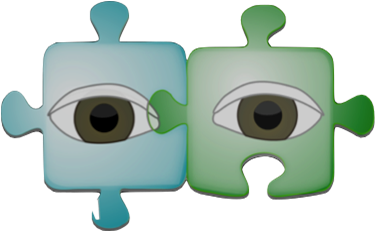
With family now having connected culturally to its roots, the pendulum then swings back to our home/time – but before going too far we adjust slightly to pick up and adopt Etuaptmumk (Two-Eyed Seeing) from Mi’kmaw Elder Albert Marshall – adopting this way of knowing encourages the realization that beneficial outcomes are much more likely in any given situation if we are willing to bring two or more perspectives into play (something that scientists are striving to learn today).
Perhaps from this short swing and early enough adjustment we never make the most egregious wrongs of Colonialism, we learn earlier to listen to the patterns of the land and we develop truly sustainable relationships with the Earth and each other.
Mid-range and back again – the Champlain Sea intrusion
Gazing up from home, light scatters in a wide swath, making it difficult to determine exactly which way is up. The water is murky, filled with flocculant (very fine suspended solids), lazily creating glaciomarine Leda clay that will later be known as a local hazard due to its poor cohesiveness and a source of frustration for geotechnical folks. The light dims, bending around a beluga whale gliding effortlessly overhead heading east back to the open sea. Not having a boat and seeing no other options to get to the coast we hitch a ride with the whale toward the open sea.
Around 10 to 12 thousand years ago the Laurentide Ice Sheet had recently receded after having advanced into the continent considerably further south. When the ice dam closer to the east coast melted and broke, the Atlantic intruded into the depressed land, measuring as deep as 150 metres in this area. This was a time that the sea came to us, not the other way around (The Crow’s Path). Isostatic rebound (the rise of land masses after the removal of the huge weight of ice sheets at the end of the glaciation) eventually drained it out again but not before redefining the land, including smearing a lot of mud and displaced rocks around the valley.
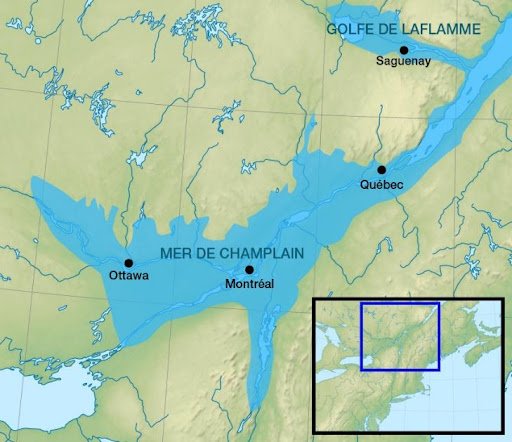
Back at the shore, with beachcombing over for the season, the pendulum swings back. As the ocean recedes from inland some of the water closer to home is cut off and forms Lake Champlain in Vermont, south of Montreal. By this time the whales know better than to keep venturing as far as Ottawa so to get home we wait for the time that we can connect with our ship-building ancestors at the coast on my father’s side of the family and ask them to build us a boat, then we travel home laboriously against the current.
Back at home time the groundwater and the land sweats out briny Champlain Sea water daily. And every day we filter and drink the saline water that settled deeply into the ancient rock, and we connect to the Sea through the muddy blanket of our garden while the mud stranded on hillsides demands attention, as it is only weakly held together. Subterranean fungi, networked again on trees rooted after glaciation, are happy to discuss the warming trend. On this swing perhaps we gain a deeper understanding of the interconnectedness of Sea, life and land.
Deep time and back again
With the widest of our 3 swings, our migration largely follows sediments borne of the Iapetus Ocean (an early version of Atlantic), some 400 M ya, from the limestones of the Ottawa Valley and St. Lawrence River Valley. We travel over the evaporites (gypsum, chalk) of New Brunswick to the metamorphic sandstones of the south shore of Nova Scotia turn back to sandstone then to sand as we travel back in time. Echoes of nearly unfathomable deep time sedimentation processes are observed on a continental scale. Along our pathway at any season there remain numerous frozen sentinels of ancient volcanoes astride the Ottawa Valley protruding through the sediments of the St. Lawrence River Valley, evidence of ancient mountain-building and slow erosion.
The family migration to the coast involved frequent counting games to pass the time. The journey there culminated by crossing jagged eroded meta-sandstones during a nighttime arrival at our destination as the high tide prevented passage any other way. But perhaps we should be more thankful, as at the time these sediments were being deposited, the moon was considerably closer to Earth than it is now and during the Ordovician and Silurian Periods the tides would have been higher, making our trip over the rocks further, higher and much more perilous.
The family spent a lot of time playing in the tidal pools along the beaches of the South Shore. As we lifted the seaweed on the rocks to expose the crabs hiding beneath, there was not much thought given to the immortality of the crab, specifically how the present fate of this creature was so connected to (and dependent upon) sedimentation and tectonic processes that occurred 3 or 4 hundred million years earlier (the immortality of the crab was a favourite reference by my late father-in-law, therefore had to be weaved in).
The ocean was seen to be exploding with life on the far reaches of this swing. Yet if the creatures of the Ordovician could talk they would probably discuss environmental stress and climate change, less urgently and with a slightly different dialect but probably understandable.
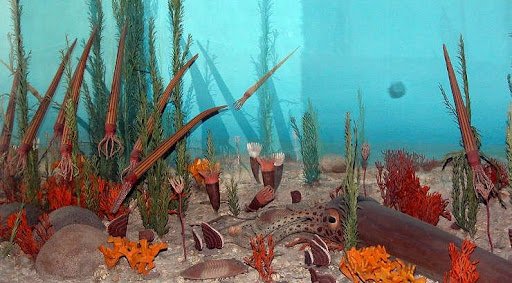
Back at home time we enjoy a paddle or swim along the failed rift valley that began to form 600 M ya (and was reactivated about 150 M ya). Fortunately the rift decided in the end to stay together, cracked but not broken, creating a future pathway for the Ottawa river between Ontario and Quebec. These days the rift is quiet except for the occasional stir from its slumber, sending mild shock waves from southern Quebec, ricocheting around the valley, temporarily pausing the mastication of hornless unicorns and Nationalist politicians (Mastication is defined as the action of chewing food, Cambridge Dictionary).
On this swing we may reflect on the direct and present connections to deep time, that nothing is created or destroyed, and begin to connect the patterns of our lives in different ways.
Part IV – There And Back Again
We’ve journeyed into recent time, mid-range time and deep time, there and back again to connect with key features of our home and our travels. Earth willing, with each swing of the pendulum we can make small changes toward better clarity and awareness of our key relationships – with the Earth and with each other. Even the shortest trips may have the longest results if repeated enough.
The Hobbit closes with “ ‘You are a very fine person, Mr. Baggins, and I am very fond of you; but you are only quite a little fellow in a wide world after all! ‘Thank goodness!’ said Bilbo laughing, and handed him the tobacco jar.”
It remains that despite the vastness of the world, ‘little’ individuals can indeed have a measurable impact on the wide world, and more broadly, on humanity, as a significant geologic force of the Anthropocene. As we weave other ways of geologic knowing into our relationships we may enable small positive incremental forces toward desired outcomes, each time the pendulum swings.

Paul Hubley (graciously dubbed “Stone Artist” by Spiritual Guide Sheinagh Anderson Ph.D.) is a professional geoscientist, husband, risk manager, father, and Fellow in a wide world after all that has spent a career retrieving errant contaminants in groundwater, soil and sediments while admiring family interactions with hornless unicorns and seasonally migrating to and from Canada’s east coast. This is his first attempt at not keeping his feet as he goes out the front door – as such, he appreciates your patience.

